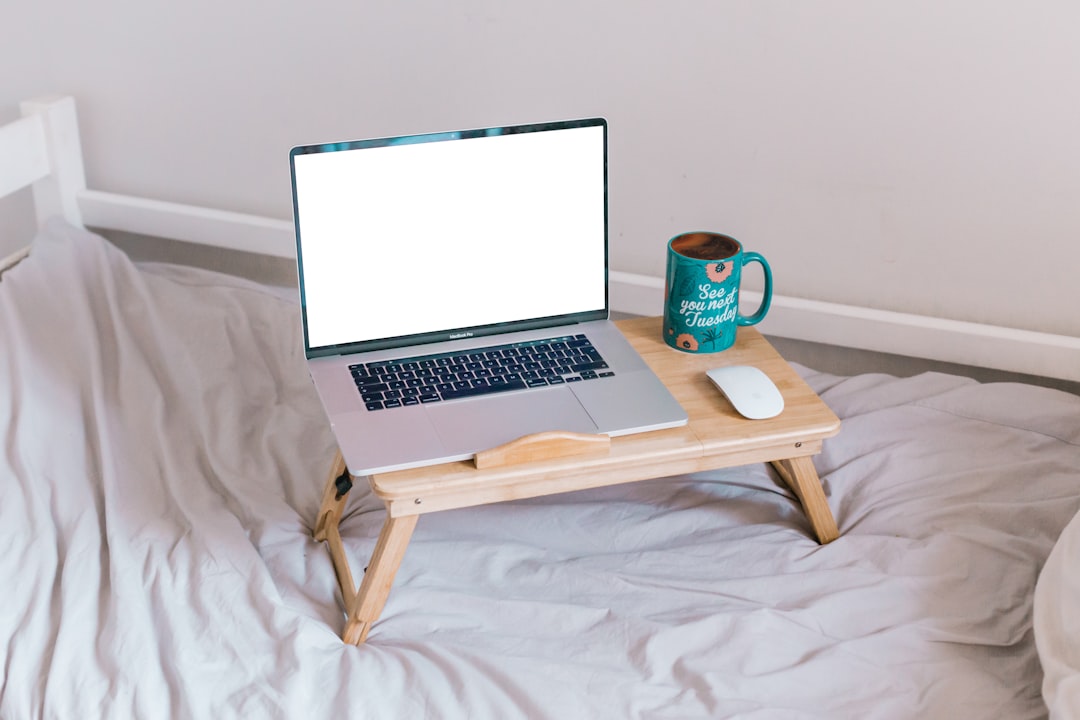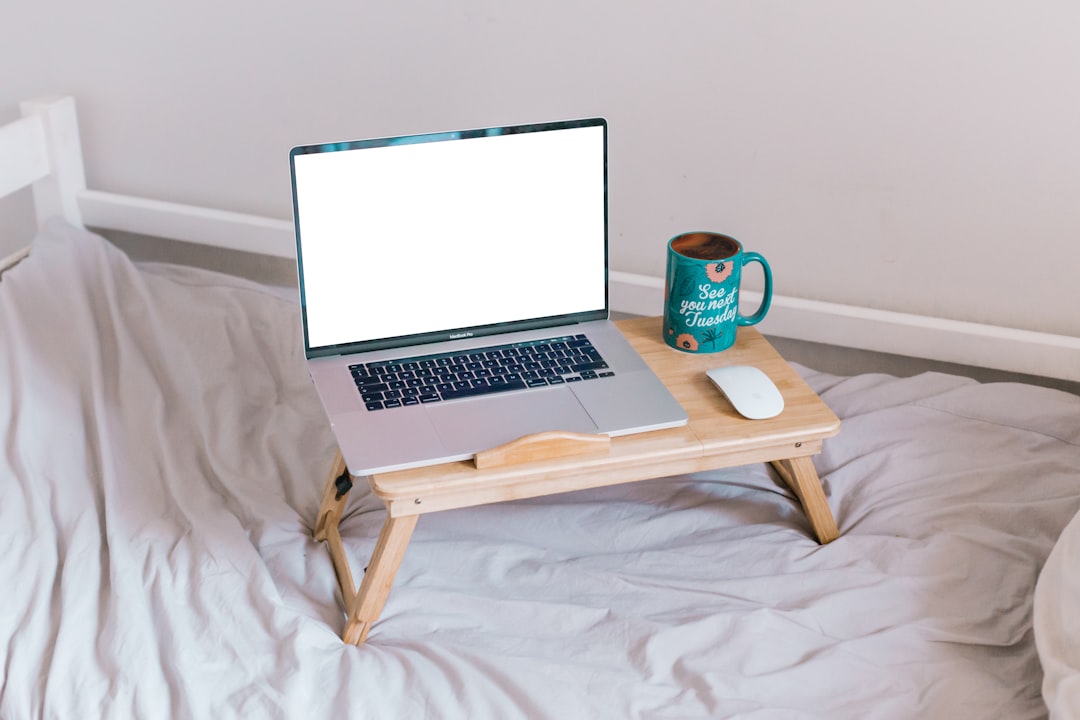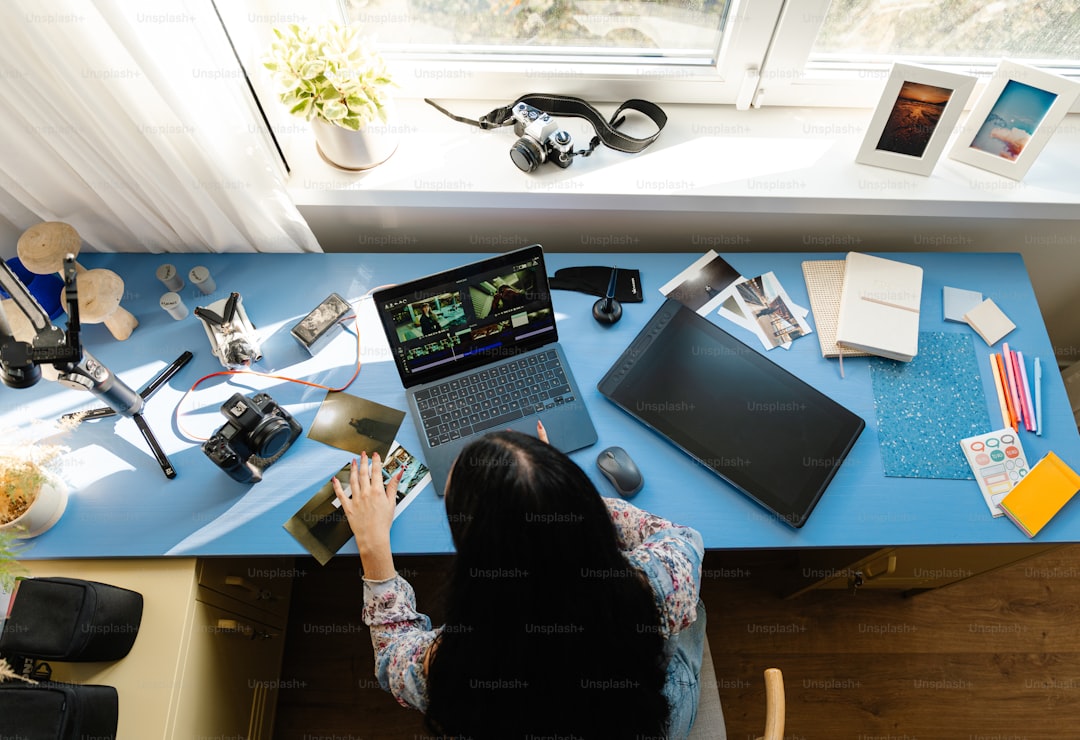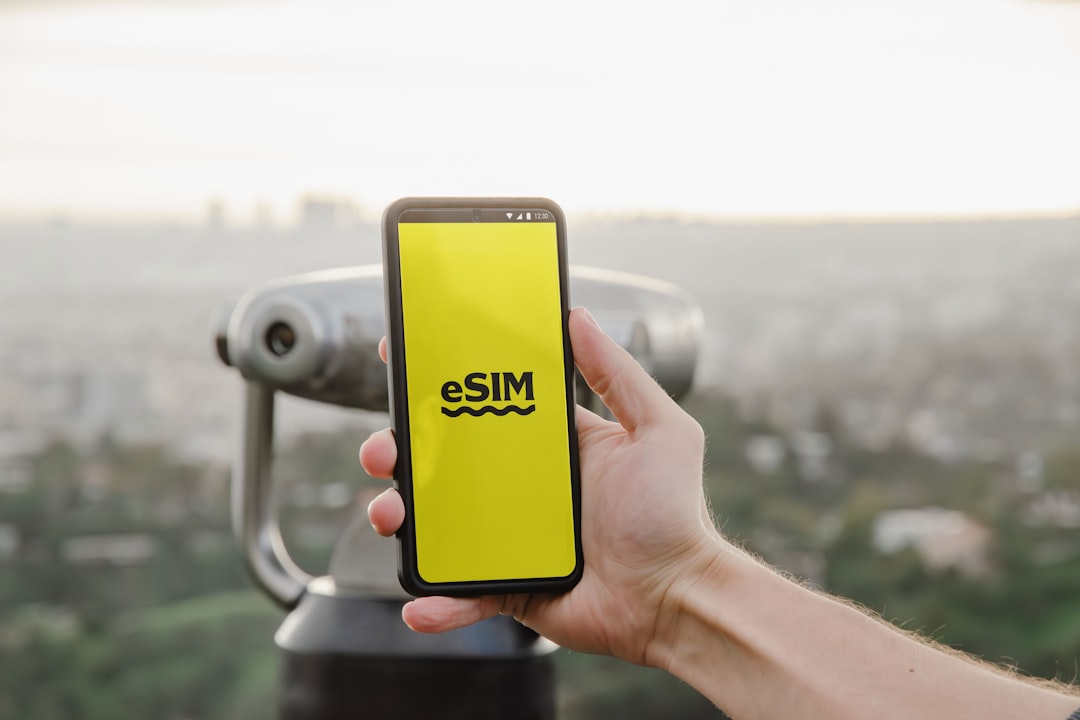How to Build a Nomadic Toolkit With Free and Paid Resources

Introduction
Living a location‑independent lifestyle is as much about mindset as it is about the tools you carry in your digital backpack. Whether you are a seasoned digital nomad hopping between co‑working spaces in Bali, a freelancer testing the waters with a month‑long stay in Medellín, or a remote employee negotiating a permanent “work‑from‑anywhere” arrangement, the quality of your experience hinges on the reliability, flexibility, and affordability of the resources you rely on every day.
This guide walks you through the process of building a nomadic toolkit that balances free and paid solutions across the five pillars that sustain a modern nomad: connectivity, finance, productivity, health & safety, and personal growth. By the end of the article you will have a clear roadmap for selecting the right apps, services, books, and podcasts, and a practical checklist you can start using immediately.
Connectivity – Staying Online Anywhere
Free Connectivity Tools
- Wi‑Fi Finder – A community‑driven map that highlights public hotspots, cafés, and libraries with reliable internet. The app is free and includes user‑rated speed information.
- Google Maps Offline – Download city maps before you travel. While it does not provide internet, it lets you locate cafés, co‑working spaces, and free Wi‑Fi zones without data.
- OpenSignal – Shows real‑time cell tower coverage and signal strength for major carriers in a given country. Helpful for picking a local SIM.
Paid Connectivity Solutions
- Nomad VPN (subscription) – Offers a network of servers optimized for streaming, torrenting, and secure banking. Plans start at $5 per month and include a kill‑switch and split‑tunneling.
- Skyroam Solis – A portable hotspot device that provides global 4G coverage in over 130 countries. The device costs $99 and includes a prepaid data plan that can be topped up as needed.
- Local SIM Packages – Purchasing a SIM from providers like SimOptions, GigSky, or regional carriers (e.g., Airtel in India, Telcel in Mexico) gives you data at local rates. Budget $10‑$30 per month for most destinations.
Building the Connectivity Layer
- Assess Your Data Needs – Video calls, streaming, and large file transfers demand more bandwidth than email and document editing. Estimate monthly usage in gigabytes.
- Choose a Primary Solution – If you travel to multiple continents within a year, a global hotspot like Skyroam may be the most convenient. For longer stays in one region, a local SIM paired with a VPN is often cheaper.
- Add Redundancy – Keep a free Wi‑Fi finder app and a backup VPN subscription. Redundancy prevents lost work time when a single provider experiences outages.
Finance – Managing Money on the Move
Free Financial Tools
- Wise (formerly TransferWise) – Enables low‑cost international transfers and multi‑currency accounts. The app is free; fees apply only on transfers.
- Currency Converter – XE – Real‑time exchange rates, price alerts, and a simple calculator for budgeting in local currency.
- Mint – Personal budgeting tool that aggregates bank accounts, credit cards, and bills into one dashboard. Works for most U.S. and Canadian institutions.
Paid Financial Services
- Revolut Premium – Offers a multi‑currency account, higher free‑exchange limits, travel insurance, and a disposable virtual card. Annual fee is around $70.
- N26 Metal – German‑based digital bank with free worldwide ATM withdrawals, travel insurance, and a metal card. Subscription costs $16 per month.
- World Nomads Travel Insurance – Comprehensive coverage for medical emergencies, adventure sports, and gear loss. Plans start at $50 for a month of coverage, with discounts for longer trips.
Constructing Your Financial Toolkit
- Open a Multi‑Currency Account – Use Wise for everyday transfers and Revolut or N26 for spending. This reduces conversion fees and gives you local‑style debit cards.
- Set Up Automatic Budget Tracking – Connect your accounts to Mint or a similar free budgeting app. Review weekly to spot overspending.
- Protect Your Assets – Purchase travel insurance early; many policies offer a 24‑hour cancellation window for peace of mind.
- Create a Backup Funding Source – Keep a secondary card (e.g., a prepaid travel card) in case your primary card is blocked or lost.
Productivity – Getting Work Done Anywhere
Free Productivity Apps
- Notion – All‑in‑one workspace for notes, databases, and project management. The free personal plan includes unlimited pages and basic collaboration.
- Trello – Visual kanban board for task tracking. Free tier offers unlimited boards and cards, ideal for solo freelancers.
- Google Workspace (Free) – Gmail, Drive, Docs, and Calendar provide a solid foundation for collaboration and file storage.
Paid Productivity Platforms
- Microsoft 365 Personal – Access to Word, Excel, PowerPoint, OneDrive, and Outlook. Subscription is $70 per year and includes 1 TB of cloud storage.
- ClickUp – Advanced project management with timelines, goals, and workload view. The Unlimited plan costs $5 per user per month and unlocks custom fields and automations.
- Todoist Premium – Enhanced task management with labels, filters, and reminders. Annual fee is $36.
Assembling a Seamless Workflow
- Choose a Core Workspace – Notion or ClickUp can serve as the central hub for all documents, tasks, and knowledge.
- Integrate Communication – Pair your workspace with Slack (free tier) or Discord for real‑time messaging with clients or teammates.
- Sync Files – Use Google Drive for quick sharing and Microsoft OneDrive for larger, version‑controlled assets.
- Automate Repetitive Steps – Set up Zapier (free tier) or Make (formerly Integromat) to connect apps, such as automatically saving email attachments to a specific folder.
Health & Safety – Staying Well on the Road
Free Health Resources
- CDC Travelers’ Health – Up‑to‑date vaccination recommendations, disease alerts, and safety tips for each country.
- First Aid App (Red Cross) – Interactive guides for common injuries, CPR instructions, and emergency contact storage.
- MyFitnessPal (Free) – Calorie tracker and food diary to maintain nutrition while eating unfamiliar cuisines.
Paid Health Services
- Doctor on Demand – Telehealth platform offering video consultations with licensed physicians. Plans start at $15 per month.
- SafetyWing Remote Health – Global health insurance specifically for remote workers, covering doctor visits, prescriptions, and hospital stays. Annual premium begins at $180.
- Nomad List “Safety” Subscription – Provides real‑time safety scores, local emergency numbers, and a community‑verified “danger alert” system. Cost is $5 per month.
Building a Health & Safety Buffer
- Vaccination Baseline – Check CDC guidelines for your upcoming destination and schedule any needed shots at least six weeks in advance.
- Secure Telehealth Access – Subscribe to a telemedicine service before you leave; it eliminates the language barrier and provides a fallback when local care is limited.
- Prepare a Mini First‑Aid Kit – Include band‑aids, antiseptic wipes, pain relievers, and any prescription meds you need. Keep it in your day‑pack for quick access.
- Stay Informed – Follow the Nomad List safety feed and set Google Alerts for your city’s name plus “crime” or “natural disaster”.
Navigation & Local Living – Knowing Where You Are
Free Navigation Tools
- Maps.me – Offline maps with points of interest, public transport routes, and walking directions. Download a country’s map once and you’re set.
- Rome2rio – Visualizes all possible transport options (flights, trains, buses, ferries) between two points. Free version shows basic routes and prices.
- Couchsurfing – Community platform for finding free accommodation and local meet‑ups.
Paid Location Services
- Citymapper – Real‑time public transit data for major cities worldwide. Premium subscription unlocks offline maps and multi‑city planning.
- Airbnb Plus – Curated listings with verified quality standards. Prices are higher than standard Airbnb but offer consistency and safety.
- Nomad List Pro – Access to a comprehensive database of cost‑of‑living, internet speed, and climate data for over 1 200 cities. Annual fee is $50.
Crafting a Local Living Stack
- Map Your Base – Use Maps.me for offline navigation and add favorite cafés or co‑working spots as custom points.
- Plan Daily Commutes – Citymapper (or local transit apps) helps you avoid costly taxis and discover the fastest routes.
- Find Accommodation – Combine free options like Couchsurfing for short stays with Airbnb Plus for longer, more reliable bookings.
- Track Living Costs – Refer to Nomad List Pro or cost‑of‑living calculators to budget rent, food, and transport before arriving.
Learning & Entertainment – Growing While You Roam
Free Learning Resources
- Audible Free Trial – 30‑day trial includes two free audiobooks, perfect for learning on long bus rides.
- Khan Academy – Full catalog of free courses ranging from math to computer programming.
- Podcast Addicts – Platforms such as Spotify, Apple Podcasts, and Google Podcasts host thousands of shows on entrepreneurship, travel, and personal development.
Paid Knowledge Platforms
- MasterClass – Yearly membership gives access to courses taught by world‑renowned experts (e.g., cooking with Gordon Ramsay, leadership with Anna Wintour).
- Skillshare Premium – Unlimited access to creative and business classes for $15 per month, with a free trial month.
- Blinkist – Summarizes non‑fiction books into 15‑minute reads or listens. Subscription costs $9 per month.
Curating an Enriching Media Library
- Identify Topics of Interest – List 3‑5 skill areas you want to improve (e.g., graphic design, negotiation, language learning).
- Allocate Time Slots – Reserve 30 minutes each morning for a podcast or audiobook, and 1‑hour blocks in the evening for video lessons.
- Mix Free and Paid Content – Use Khan Academy for foundational knowledge, then deepen expertise with a Skillshare class.
- Leverage Community – Join Discord servers or Facebook groups tied to your learning topics; peer support accelerates retention.
Community & Support – Connecting with Fellow Nomads
Free Community Platforms
- Nomad List (Free Tier) – Public rankings of cities based on internet speed, cost, and safety. Allows you to comment and ask questions.
- Reddit r/digitalnomad – Active forum where members share tips, job leads, and travel stories.
- Meetup.com – Find local gatherings, language exchanges, and co‑working events.
Paid Community Memberships
- Remote Year – Cohort‑based travel program that combines work, cultural immersion, and a built‑in community. Packages start at $3 000 per month.
- Nomad Community (Discord + Slack) – Subscription grants access to exclusive channels, mentorship matching, and job boards. Monthly fee is $12.
- WeWork All‑Access Pass – Provides entry to 800+ WeWork locations worldwide for $200 per month, ideal for those who value premium co‑working spaces.
Building Your Support Network
- Start with Free Channels – Join Reddit, Nomad List, and local Meetups to get immediate feedback and make contacts.
- Upgrade When Needed – If you require structured mentorship or consistent workspace, invest in a paid community or coworking pass.
- Give Back – Share your own experiences, answer questions, and contribute resources. Reciprocity builds stronger bonds and often leads to unexpected opportunities.
Step‑by‑Step Blueprint for Assembling Your Toolkit
Step 1 – Define Your Lifestyle Parameters
- Trip Length – Short‑term (weeks), medium‑term (months), or long‑term (year+).
- Work Requirements – Video calls, heavy data transfers, or low‑bandwidth tasks.
- Budget – Total monthly allowance for tools, insurance, and living expenses.
Step 2 – Map Core Pillars to Tools
| Pillar | Free Essentials | Paid Enhancements |
|---|---|---|
| Connectivity | Wi‑Fi Finder, OpenSignal | Nomad VPN, Skyroam |
| Finance | Wise, XE, Mint | Revolut Premium, N26 Metal |
| Productivity | Notion, Trello, Google Workspace | Microsoft 365, ClickUp |
| Health & Safety | CDC, First Aid App | Doctor on Demand, SafetyWing |
| Navigation | Maps.me, Rome2rio | Citymapper, Nomad List Pro |
| Learning | Khan Academy, Podcasts | Skillshare, MasterClass |
| Community | Reddit, Nomad List | Nomad Community, Remote Year |
Step 3 – Prioritize Based on Immediate Needs
- If you are traveling to a region with spotty internet, allocate funds first to a reliable hotspot and VPN.
- For high‑value contracts that require secure banking, prioritize multi‑currency accounts and travel insurance.
Step 4 – Test Before You Commit
- Use free trials (e.g., Nomad VPN 7‑day trial, Skillshare one‑month trial) to evaluate performance.
- Run a short “pilot” month in a nearby city to see how tools interact in real life.
Step 5 – Optimize and Scale
- After the pilot, cancel any services that did not add value.
- Reallocate those funds to tools that proved indispensable (e.g., upgrade to ClickUp Unlimited if you need advanced automation).
Step 6 – Maintain and Update
- Review subscriptions quarterly.
- Keep apps updated to benefit from security patches.
- Refresh your local knowledge (new cafés, changed visa rules) at the start of each destination.
Budgeting for a Balanced Toolkit
A realistic monthly budget for a solo nomad can range from $200 to $800, depending on destination cost and service choices. Below is a sample breakdown for a mid‑range setup:
- Connectivity – Nomad VPN $5 + occasional local SIM $10 = $15
- Finance – Revolut Premium $6 = $6
- Productivity – ClickUp Unlimited $5 + Microsoft 365 Personal $6 = $11
- Health – SafetyWing insurance $15 = $15
- Navigation – Citymapper Premium $3 = $3
- Learning – Skillshare $15 = $15
- Community – Nomad Community Discord $12 = $12
Total: $77 per month
Add a buffer for occasional coworking passes ($30‑$50), emergency medical costs, or upgraded accommodation. This leaves ample room within a $300‑$500 monthly living budget, which is common for many popular nomad hubs.
Real‑World Case Studies
Case Study 1 – The Freelancer in Southeast Asia
Maria, a freelance graphic designer, spent six months traveling between Chiang Mai, Bali, and Ho Chi Minh City. Her toolkit consisted of:
- Connectivity – Skyroam Solis for global coverage, supplemented by local SIMs in each country.
- Finance – Wise for client payments, Revolut Premium for daily spending.
- Productivity – Notion for project briefs, ClickUp for task management, Google Drive for file storage.
- Health – SafetyWing insurance and Doctor on Demand for tele‑consultations.
She spent an average of $85 per month on tools, which saved her time and prevented lost income due to connectivity issues.
Case Study 2 – The Remote Engineer in Europe
Liam, a software engineer working full‑time for a US company, based himself in Lisbon for a year. His essential tools:
- Connectivity – Local Portuguese SIM with unlimited data, plus a Nomad VPN subscription for secure banking.
- Finance – N26 Metal for fee‑free withdrawals and travel insurance.
- Productivity – Microsoft 365 for document collaboration, Trello for sprint planning.
- Health – Local EU health insurance via SafetyWing, supplemented by a tele‑health plan.
Liam’s monthly cost for paid services was $60, but the reliability of his local data plan eliminated the need for an expensive hotspot.
Case Study 3 – The Digital Nomad Couple in South America
Ana and Carlos traveled together across Colombia, Ecuador, and Peru. Their shared toolkit emphasized community and entertainment:
- Connectivity – Shared Skyroam hotspot, each with a personal VPN.
- Finance – Joint Revolut Premium account for shared expenses, individual Wise accounts for freelance income.
- Productivity – Shared Notion workspace, ClickUp for joint travel planning.
- Learning – Skillshare Premium for both, plus Audible trial for language learning.
- Community – Nomad Community Discord membership for networking and job leads.
Their combined monthly spend on tools was $120, but they saved significantly on accommodation by leveraging community‑found housing tips.
Maintaining Your Toolkit Over Time
- Quarterly Audits – Review each subscription, cancel those you haven’t used in the last 30 days.
- Version Control – Keep a Google Sheet that lists all tools, login credentials (store passwords in a secure manager like Bitwarden), renewal dates, and cost.
- Stay Informed – Subscribe to newsletters from nomad‑focused blogs (e.g., Nomad List, Remote Year) to learn about new discounts or emerging tools.
- Adapt to New Locations – When entering a new country, reassess local SIM options and internet café reliability; adjust your primary connectivity method accordingly.
Final Thoughts
Building a nomadic toolkit is not a one‑size‑fits‑all project. The most effective setups blend free resources that provide flexibility with paid services that guarantee reliability and security. By systematically evaluating your connectivity, finance, productivity, health, navigation, learning, and community needs, you can craft a lean yet powerful collection of tools that supports any lifestyle—from short‑term backpacking to multi‑year remote work.
Remember that tools are only as good as the habits you build around them. Regularly review your usage, stay open to emerging solutions, and keep the community aspect at the forefront of your nomadic journey. With a thoughtful toolkit in place, the world truly becomes your office.
Random Posts

Where to Work Remotely in Latin America
Discover the best Latin American cities for remote work, offering affordable living, fast internet, coworking hubs, visa tips, safety and vibrant culture, all in one concise guide for digital nomads.
2 months ago

Tax Filing Hacks for Nomads Across Borders
Learn how digital nomads can master tax residency, use treaties, simplify foreign income reporting, and employ banking and crypto tools to stay tax efficient across borders.
1 week ago

Smart Finance Tax and Legal Strategies for Nomads Plus Health and Travel Insurance Plans
Discover how digital nomads can protect earnings and stay compliant with smart tax residency, corporate structures, and the right health and travel insurance, so you can roam worry-free.
1 month ago

Beginners Roadmap To Freedom On The Move
Follow a step-by-step roadmap that shifts your mindset, builds a lean financial base, equips you with essential gear, sets up remote work, handles legal basics, and creates healthy habits for sustainable nomadic freedom.
1 week ago

Secure Payment Platforms for the Location Independent
Discover the top secure payment platforms that let digital nomads, freelancers and online entrepreneurs receive money worldwide on a phone, swap currencies instantly and stay protected from fraud.
1 month ago
Latest Posts

Essential Software Every Remote Professional Should Use
Master remote work with essential tools: instant messaging like Slack, high definition video calls such as Zoom, and asynchronous voice apps. Streamline communication, stay connected and boost productivity.
1 day ago

Mastering Remote Work Productivity for Digital Nomads and Freelancers
Learn proven habits, tools, and tactics that help digital nomads and freelancers stay focused, deliver quality work, and maintain a sustainable lifestyle while traveling the world.
1 day ago

Tech‑Friendly European Towns Perfect for Remote Living
Discover Europe’s best small towns where fast internet, affordable living and vibrant tech communities let you work remotely while soaking up historic charm, lakeside views or mountain air.
1 day ago